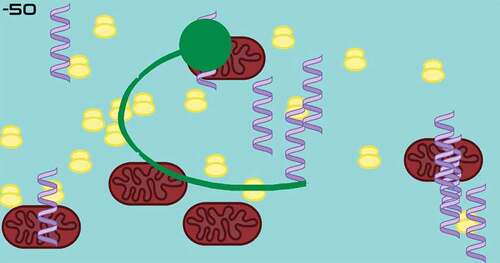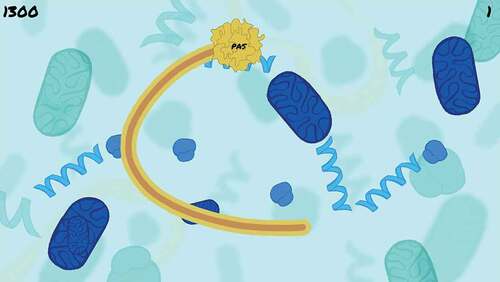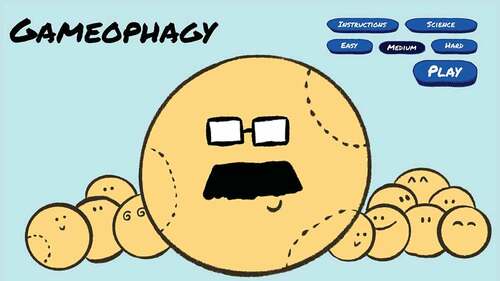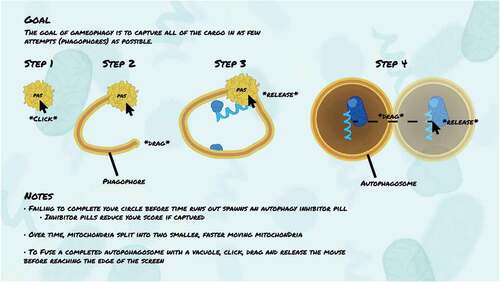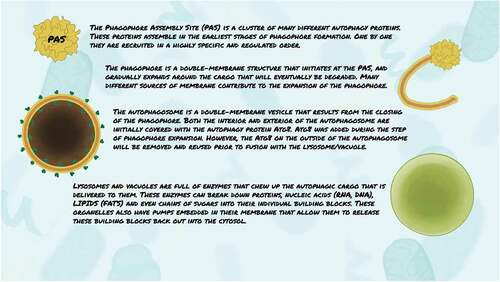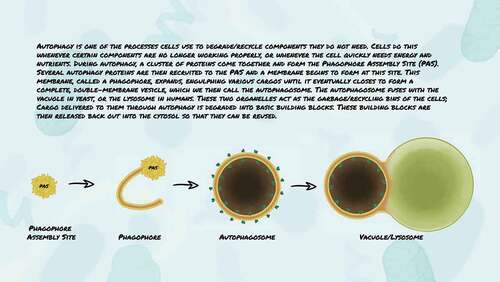ABSTRACT
Macroautophagy/autophagy is the process by which portions of the cytoplasm are sequestered within a transient compartment and delivered to the degradative organelle of the cell, the vacuole or lysosome. Autophagy is a fundamental cytoprotective mechanism, and defects in this process are associated with many diseases. For example, the inability to degrade certain cargo such as mitochondria may lead to neurodegenerative disorders such as Parkinson disease. Autophagic cargo can be many different things including organelles, but also proteins and protein aggregates, nucleic acids, and lipids. Much of our understanding of autophagy comes from studies in baker’s yeast, Saccharomyces cerevisiae. In that organism, autophagy begins at the phagophore assembly site (PAS), which nucleates the initial sequestering compartment, referred to as a phagophore. With the help of autophagy-related (Atg) proteins and lipid addition, the phagophore membrane expands to enclose damaged or superfluous cytoplasmic components, eventually closing into a completed double-membrane vesicle called the autophagosome. The autophagosome is delivered to the degradative organelle where it fuses, releasing the encapsulated cargo into the interior of the organelle where it is broken down into macromolecular building blocks. The resulting building blocks are released back into the cytosol for reuse. Video games are modern expressions of art incorporating illustration, animation, and mechanistic design. While often underappreciated as a scientific art form, video games can beautifully express scientific topics in a way that is both intuitive and engaging, especially to a younger audience.
Introduction
By March 2020, SARS-CoV-2 had become pandemic; my lab (and most of the world) shut down. This, coupled with the fact that creating genetically modified microbes in one’s basement is generally frowned upon, put quite the damper on my molecular biology research. However, I was also an amateur programmer with a desire to improve, giving me an avenue to stay busy during the quarantine. So how might I do that? Analyze the transcriptional profile of autophagy genes under various conditions? Perform homology searches to identify novel counterparts to the human autophagy proteins? “No”, I thought to myself, “I’ll make a video game”. And so it was that Gameophagy was born. Over the next few weeks, I cobbled together a wall of messy code that generated my first prototype (). It was rough, but it captured the basics of autophagy. Players had to click the mouse (nucleate the PAS) and complete a full circle (expand the phagophore), ending at roughly the same spot that they began before the timer ran out. Doing so would complete the autophagosome, trapping any encircled cargo inside. The player would then click and drag to send the autophagosome off to the vacuole/lysosome for degradation.
I (virtually) presented this early iteration of the game in our weekly lab meeting to the delight of everyone attending and posted it on the Autophagy subreddit where it generated some amusement, but not much was done with it beyond that. Fast forward to 2021 and I developed the urge to update my pet project, perhaps turning it into a more useful, educational tool (). I discussed with Dan Klionsky about how I could improve the game. As usual he was not short for suggestions, and I gradually implemented many updates to the game. For example, the line representing the phagophore became a double-membrane, which is more representative of the actual structure; after an autophagosome is delivered to the lysosome/vacuole off of the screen, building blocks are released; mitochondria now fission over time, incentivizing the player to move quickly. In addition, I expanded the educational aspects; the game now has a detailed instructions page and science pages which describe every detail from a cell biology lens. However, even with these improvements, it was clear the game could use an artistic touch. For example, the background was a single color and in no way reflected the crowded environment of a cell. Accordingly, I brought in illustrator and graphic designer Emily Grush to help me improve the look of the game ().
Game design
Game pages
Upon launching Gameophagy, the player is brought to the home screen () where he/she can click on a link to view the instructions page (), view the science pages (), select the difficulty, or enter straight into the game.
Instructions
The instructions page is accessible from the Gameophagy home screen () and provides detailed information on how the game is played.
Science
The science pages () allow the user to learn about the cell biology being depicted in Gameophagy. There are individual pages describing the various cargos (), the individual autophagy components (), and the process of autophagy as a whole ().
Difficulty
As the difficulty increases, cargos move more quickly, making them more difficult to capture. Additionally, the time allowed for autophagosome completion declines sharply to a fraction of a second on the “Hard” difficulty. In return, the player is rewarded with a higher score value for each piece of cargo captured.
Major features
Three autophagic cargos were selected for inclusion in the game: mitochondria, ribosomes, and RNA strands. These cargos were chosen primarily due to their ease of illustration and diversity in appearance. Mitochondria are dynamic organelles that fuse and fission over time. Mitochondria in the game were therefore designed to fission into smaller, more rapidly moving mitochondria. There is some evidence that fission aids sequestration [Citation5–7]. In addition to being biologically relevant, this also serves to incentivize the player to move quickly, as the smaller mitochondria will be more difficult to capture. Mitochondria are thought to have evolved from the endosymbiotic uptake of a bacterium into a primitive eukaryotic cell. Therefore, it is not surprising that autophagy is also used by cells to remove invasive microbes in a process termed xenophagy. A future version of the game could incorporate a xenophagy component where the invasive microbes would replicate over time.
Upon clicking the left mouse button, a cluster of proteins representing the PAS appears. The user then drags the mouse to expand the phagophore in one direction. This unidirectional expansion represents a compromise as it is a critical part of the game mechanics but not entirely representative of biology – expansion would likely occur in multiple directions simultaneously in a three-dimensional setting. Upon closure, the completed double-membrane autophagosome can be seen, decorated on both the interior and exterior with Atg8 molecules. In the cell, these Atg8 molecules would be gradually removed from the exterior prior to fusion with the vacuole/lysosome. After sending the autophagosome off screen, building blocks can be seen coming back in the opposite direction. This is meant to represent the cytosolic release of building blocks through permeases after vacuolar/lysosomal degradation of the autophagic cargo. These building blocks can be reused by the cell for protein, membrane, and nucleic acid production or to provide energy [Citation8,Citation9].
Accessibility
Gameophagy was primarily designed for Windows systems. However, a Mac version suitable for some machines is also available at the GitHub page: https://github.com/wxhawkins/Gameophagy.
Discussion
I learned a great deal from working on this project. Ask just about any programmer and they will tell you that it is fun projects like this where you learn the most. I encountered many technical challenges in trying to implement the various mechanics of Gameophagy. I also had to think long and hard about how to strike the balance between fun, practical game mechanics and staying true to the biology. Many similar struggles were found on the aesthetic side as well and had to be worked out in close collaboration with Emily. Ultimately, we hope that Gameophagy provides a fun way for up-and-coming scientists to observe the basic mechanisms of autophagy in a way quite different from how they would normally be introduced to the subject.
In the interviews below, Dan asks Emily and me questions about the rationale behind the game’s creation and artistic design, as well as the difficulties in balancing aesthetics with scientific accuracy.
What scientific background, if any, do you have?
High school chemistry which I passed with a C+.
So, is it safe to say that science was not an area that you planned to work in? What was your major in college?
It’s safe to say that this is not an area I planned to work in, but I’m glad I got the chance to explore it more in this project. My major was originally film animation; however, I changed paths to focus more on graphic design and multimedia production.
Can you tell me a little about your artistic background?
I currently work as a graphic designer for a real estate company. I also write and create illustrations on the side. My medium is primarily digital, using the Adobe Creative Suite as well as Procreate to illustrate children’s book-style work.
How have you found scientific illustrations to differ from your usual medium?
They differ in a lot of ways, but they both have the same goal: to tell a story. I’d say the most significant difference is the emphasis on precision. With design and illustration (especially design) there’s a religious mantra of “less is more”. In scientific illustration though, the story you’re telling must be direct, detailed, and above all – accurate (or as accurate as the visual interpretation can be).
Wayne, I assume your college major was in a field such as biology? How and when did you become interested in programming, and where did you start to pick up the skills that let you develop a program such as Gameophagy?
I studied biochemistry in college, but I’ve always had a love for computer games which led to an interest in computers. I took a summer programming class junior year of college and really enjoyed it. Soon after, I started on my first major coding project – a stick figure fighting game called Brittle Sticks. After that, I utilized coding and bioinformatics extensively in my undergraduate thesis, worked as a programmer for a summer, and am now using coding for my graduate studies. These experiences positioned me well to create Gameophagy.
Emily, do you have some examples of when the scientific constraints became important?
Absolutely. For the cargo, I was doing simple “glow up” work of taking the designs from the original game () and creating more unity with colors and line textures. The scientific stakes were raised, however, soon after settling on a unified look. For example, the original phagophore was not double membraned. The PAS was also changed significantly, going from a simple circle to the cluster of blobs (). The “blobs” were referenced from the fantastic work of Dr. David Goodsell (https://pdb101.rcsb.org/motm/203). The autophagosome also saw changes to its design. My original concept was single-membraned and only had Atg8 on the outside. After consulting with Wayne, changes were made to make the illustration closer to reality.
Although I do not play computer games, I know that role-playing games are quite popular. Have you considered including some aspect of role-playing in the development of a future version of Gameophagy?
I … I have not.
Materials and Methods
Gameophagy was coded using Python 3.7.6 and Pygame version 2.0.1. Assets and illustrations were designed using Adobe Illustrator 2021 and Procreate version 5.2. Full source code can be found at https://github.com/wxhawkins/Gameophagy/tree/master/source.
Acknowledgments
We thank Javiera Balut for her original illustration seen on the Gameophagy home screen.
Disclosure statement
No potential conflict of interest was reported by the author(s).
Additional information
Funding
References
- Anderson M, Jiang J. Teens, social media & technology 2018. Pew Research Center; 2018. Available from: https://www.pewresearch.org/internet/2018/05/31/teens-social-media-technology-2018/
- Crocco F, Offenholley K, Hernandez C. A proof-of-concept study of game-based learning in higher education. Simul Gaming. 2016;47(4):403–422.
- Vlachopoulos D, Makri A. The effect of games and simulations onhigher education: a systematic literature review. Int J Educ Technol High Educ. 2017;14(1):22
- Stiller KD, Schworm S. Game-based learning of the structure and functioning of body cells in a foreign language: effects on motivation, cognitive load, and performance. Front Educ. 2019;4:18.
- Youle RJ, van der Bliek AM. Mitochondrial fission, fusion, and stress. Science. 2012 Aug 31;337(6098):1062–1065.
- Iglewski M, Hill JA, Lavandero S, et al. Mitochondrial fission and autophagy in the normal and diseased heart. Curr Hypertens Rep. 2010 Dec;12(6):418–425.
- Mao K, Wang K, Liu X, et al. The scaffold protein Atg11 recruits fission machinery to drive selective mitochondria degradation by autophagy. Dev Cell. 2013 Jul 15;26(1):9–18.
- Yang Z, Huang J, Geng J, et al. Atg22 recycles amino acids to link the degradative and recycling functions of autophagy. Mol Biol Cell. 2006 Dec;17(12):5094–5104.
- Kuma A, Mizushima N. Physiological role of autophagy as an intracellular recycling system: with an emphasis on nutrient metabolism. Semin Cell Dev Biol. 2010 Sep;21(7):683–690.

